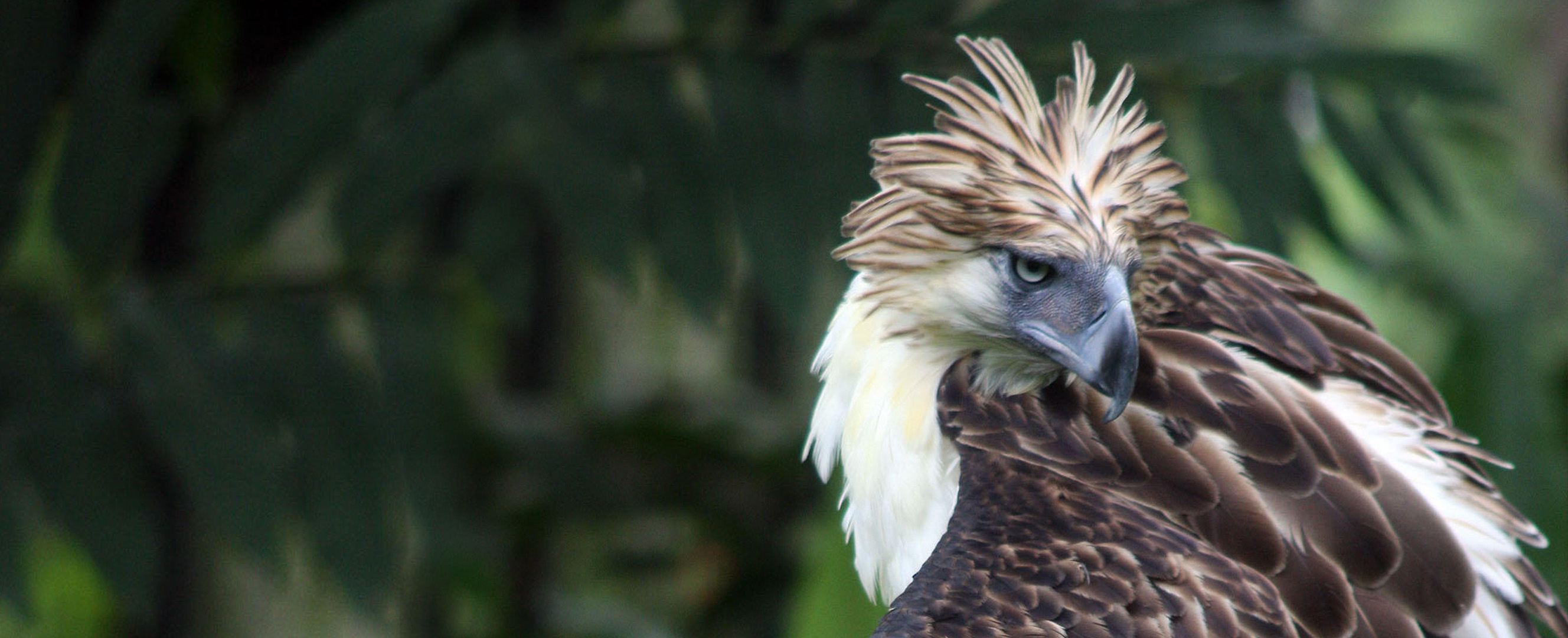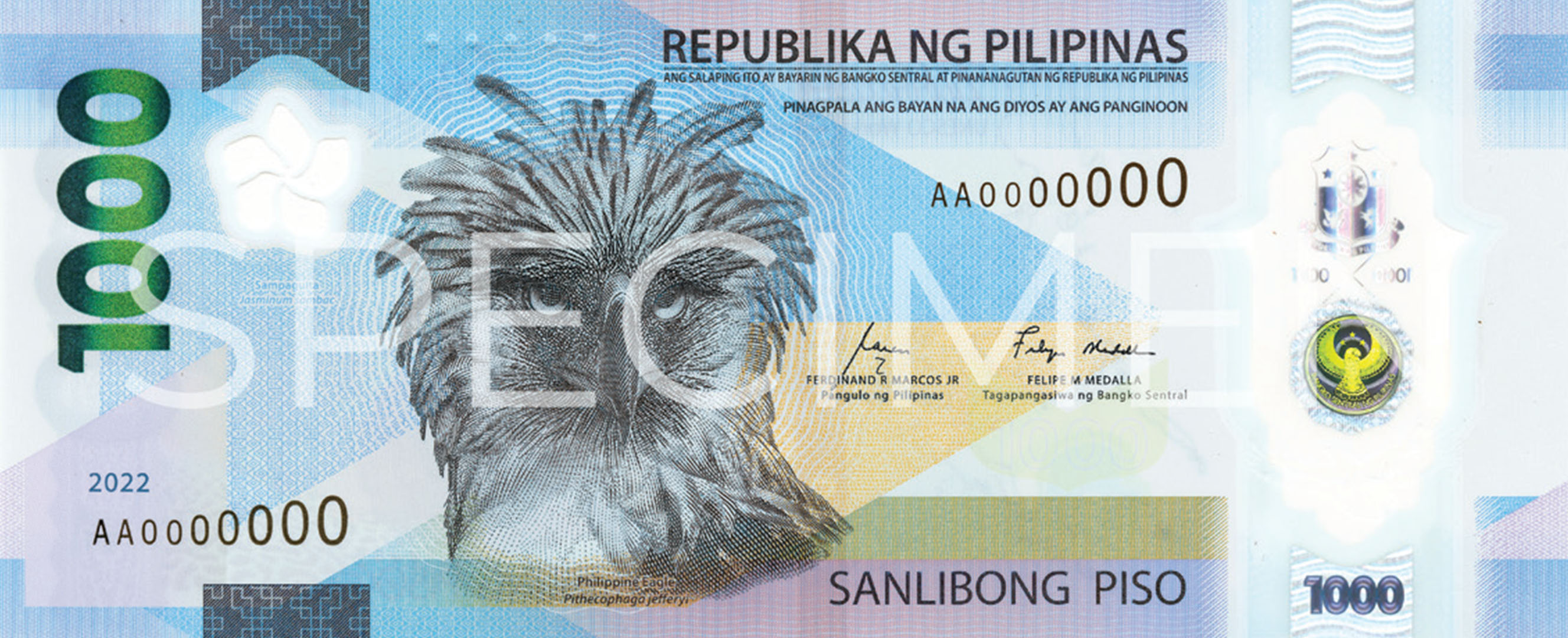Catalyzing support for the Philippine national bird could stem its rapid decline.
With a wingspan of more than seven feet, steely gray-blue eyes, and a mane-like crest, the Philippine eagle is one of the world’s largest and most striking raptors. It’s also at high risk of extinction, according to the International Union for Conservation of Nature—a comprehensive information source of threatened animals, fungi, and plants.
Found on just four Philippine islands, the eagle is featured on the new 1,000 peso banknote to “highlight the importance of the preservation of this endangered species,” says Sara Curtis, a director at the Philippine central bank. But because the birds are so difficult to track, there is still a “fundamental lack of information regarding their distribution and population size,” says Dennis Salvador, executive director of the Philippine Eagle Foundation (PEF) and coauthor of a recent study in the journal Animal Conservation. Researchers estimate there are just 392 potential pairs left.
The Philippines’ new 1,000 peso banknote was released last year.
Eagle pairs need about 4,000–11,000 hectares of forestland to survive. Their range once covered 90 percent of the Philippines, or about 27.5 million hectares of forest cover. That span has dwindled to only 7 million hectares, according to data from the Department of Environment and Natural Resources.
PEF—an institution dedicated to the survival of these birds—is working with forest communities to reforest and protect cleared areas so that the birds can travel and hunt in safety. But if the eagles are to be saved, says Salvador, it will require a mass movement.
To raise awareness, two proclamations were issued by former Presidents Fidel Ramos and Joseph Estrada: one declared the eagle the national bird, the other established Philippine Eagle Week. In addition, a newly designed 1,000 peso polymer banknote was released in April last year, featuring the Philippine eagle and the national flower, sampaguita (a type of jasmine), on the front. The eagle exemplifies “Filipinos’ strength and love for freedom,” says Curtis.
The note’s design and security features won it the International Banknote Society’s 2022 “Banknote of the Year” award, and it is the first in the country to be printed on polymer.
Increased public awareness and a national wildlife conservation law have bought the eagle time, but the PEF is breeding the birds in captivity to keep them from going extinct. In an interview with Living Bird magazine, Salvador was hopeful: “I think we have a real chance of saving the eagles, even with the little we have left. It’s just a matter of political will and attitude.”
Opinions expressed in articles and other materials are those of the authors; they do not necessarily reflect IMF policy.










